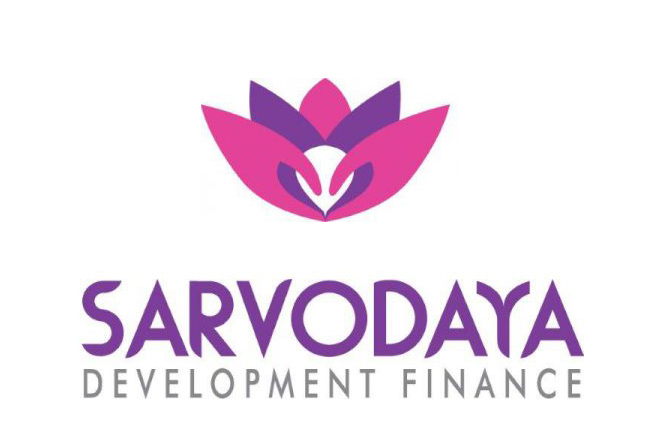Oct 29, 2020 (LBO) – Fitch Ratings has assigned Sarvodaya Development Finance Limited (SDF) a National Long-Term Rating of 'B+(lka)'. The Outlook is Stable.
KEY RATING DRIVERS
SDF's rating reflects its weak financial profile, particularly the pressure on its capitalisation and leverage caused by deteriorating asset quality and a high-risk appetite. The rating also captures SDF's small franchise and less established and evolving business model among finance and leasing companies.
Our assessment of the operating environment for Sri Lankan finance and leasing companies incorporates the negative repercussions from the pandemic-related economic downturn on the company's largely sub-prime clientele.
We regard SDF's risk appetite as high due to its evolving underwriting standards and risk controls, which are not commensurate with its expanding operating scale.
We see further downside risk to SDF's weak asset quality in the near- to medium-term due to the unseasoned nature of its portfolio and the economic fallout from the pandemic. SDF's six-month reported regulatory non-performing loan (NPL) ratio continued to rise sharply to 11.9% in the financial year ending end-March 2020 (FY20), from 9.0% in FY19, and impaired loans (stage 3 loans) increased to 24.8%, from 17.6%.
We believe rising credit costs will dampen SDF's profitability in the near to medium term, with a pre-tax return on assets ratio of 3% in FY20, but some pressure may be eased with better cost efficiencies. SDF benefits from high yields, but relies on high-cost wholesale borrowings for incremental funding due to its current inability to raise deposits. This weakens its pre-impairment operating profit buffers.
We do not think SDF's capitalisation and leverage - as indicated by a debt/equity ratio of 5.8x in FY20 - is commensurate with its risk appetite or business model, as its customers tend to be more vulnerable to economic conditions and it has an aggressive growth trajectory, with loan growth exceeding that for the sector. A high share of unprovided NPLs has exposed SDF's capitalisation to credit shock. The company plans to inject capital to comply regulatory minimum capital requirements, which, if successful, would support its capitalisation and leverage.
The challenging operating conditions, which have been exacerbated by the pandemic, have elevated funding and liquidity risks for SDF. The Central Bank of Sri Lanka has imposed regulatory sanctions on SDF by way of a deposit cap of LKR5.5 billion due to non-compliance in maintaining a minimum prescribed capital level. We believe this can hamper SDF's financial flexibility, despite having a 74% share of deposits in the funding mix. SDF also has a short funding duration and inadequate liquid lines to support its negative maturity gaps. Positively, relative to peers, SDF has successfully developed a rural-based funding platform where it sources deposits from rural members that are connected to its parent group's social activities.
SDF has a small market share of 0.6% of assets in the finance and leasing sector and is focused on providing financing to rural borrowers. The company derives benefits from its linkages to its parent group, the Sarvodaya Shramadana Movement, which provides a rural customer platform for SDF. SDF, which started as a microfinance lender, has seen its business model evolve. Its non-microfinance loan segments have expanded quickly, with large-ticket lending forming 70% of its portfolio at end-September 2020, from 12% in March 2016.
RATING SENSITIVITIES
Factors that could, individually or collectively, lead to positive rating action/upgrade:
Positive rating action appears unlikely in the near-term in light of the ongoing macroeconomic pressure. A capital injection, along with an improvement in SDF's franchise strength, business-model stability and risk controls would be positive for its rating in the longer term.
Factors that could, individually or collectively, lead to negative rating action/downgrade:
Increased asset-quality risks contributing to a further weakening in its capital position would trigger a downgrade. Furthermore, a capital impairment through continued asset-quality deterioration could heighten funding and liquidity risks, while an inability to raise new capital to meet regulatory requirements could constrain operational and funding-access and would be negative for the rating.
Issuer Disclosure on Regulatory Action
The Central Bank of Sri Lanka has imposed a cap of LKR 5.5. Billion for Total Deposits on 23rd January 2019 as SDF did not comply with capital requirement of LKR 1.5 Billion as at 01st of January 2019 as per direction no 02 of 2017 - Minimum Core Capital.
The "Issuer Disclosure on Regulatory Action" sub-heading was provided by the issuer and is included pursuant to applicable regulatory requirements. Fitch Ratings Lanka is not responsible for the contents of such information.

